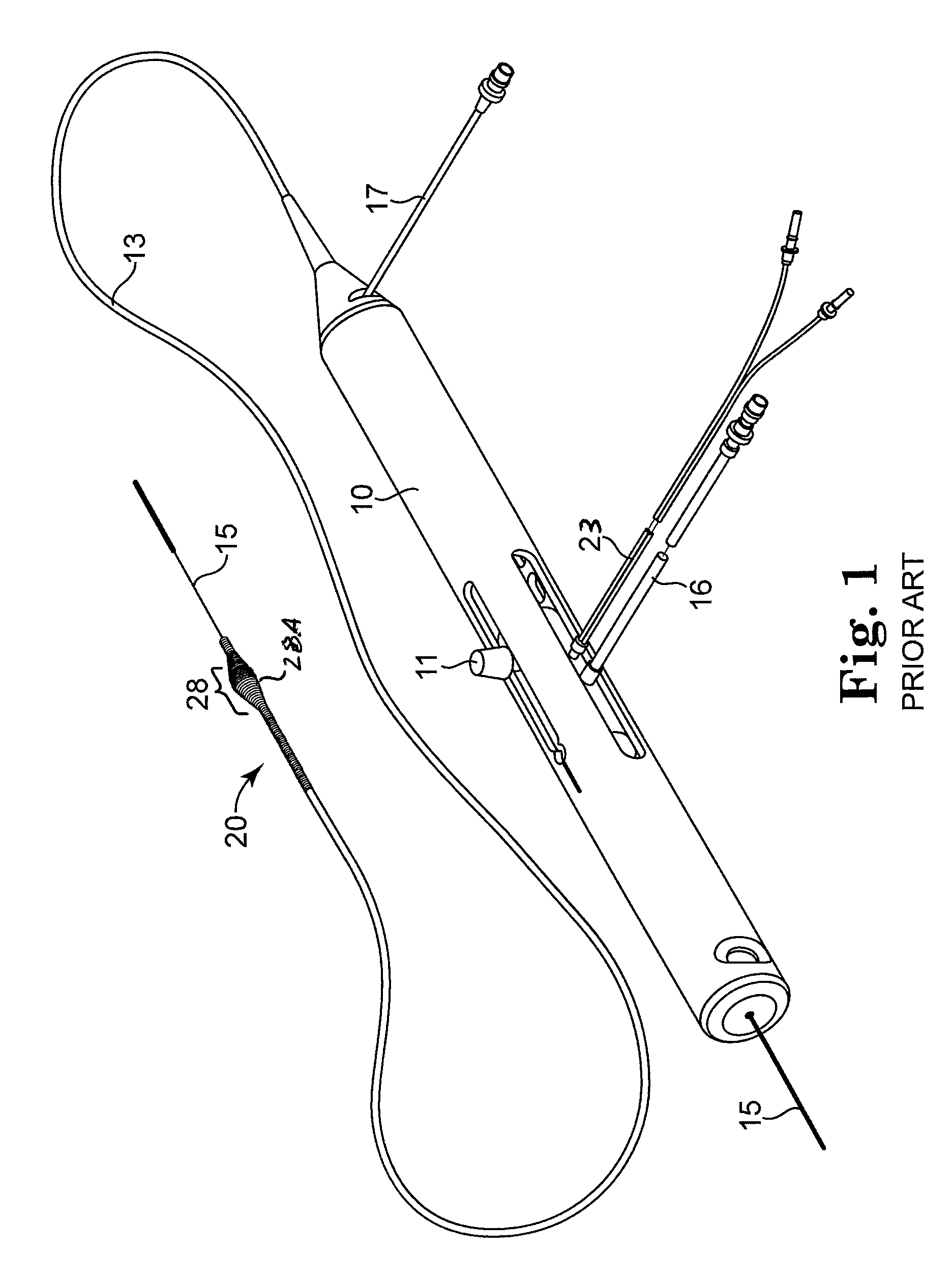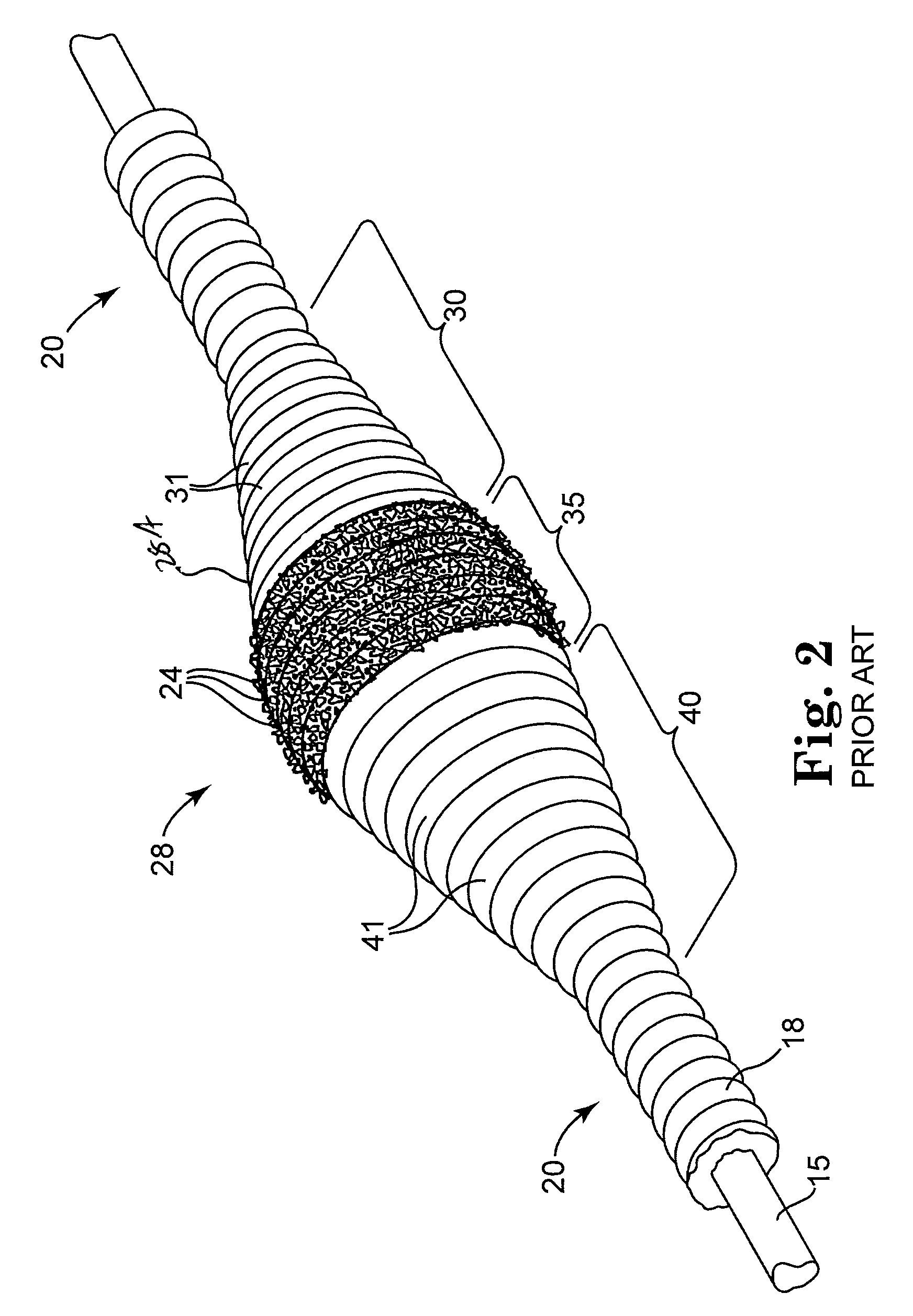Rotational atherectomy device with counterweighting
a technology of atherectomy and weight, applied in the field of rotational atherectomy devices with weight, can solve the problems of stent restenosis, block blood flow, and angina, and achieve the effects of reducing the risk of strok
- Summary
- Abstract
- Description
- Claims
- Application Information
AI Technical Summary
Benefits of technology
Problems solved by technology
Method used
Image
Examples
Embodiment Construction
[0031]While the invention is amenable to various modifications and alternative forms, specifics thereof are shown by way of example in the drawings and described in detail herein. It should be understood, however, that the intention is not to limit the invention to the particular embodiments described. On the contrary, the intention is to cover all modifications, equivalents, and alternatives falling within the spirit and scope of the invention.
[0032]FIG. 1 illustrates a typical rotational atherectomy device of the invention. The device includes a handle portion 10, an elongated, flexible drive shaft 20 having an abrasive section 28 comprising an eccentric enlarged diameter section 28A, and an elongated catheter 13 extending distally from the handle portion 10. The drive shaft 20 and its eccentric enlarged diameter section 28 are constructed from helically coiled wire. The catheter 13 has a lumen in which most of the length of the drive shaft 20 is disposed, except for the enlarged ...
PUM
 Login to View More
Login to View More Abstract
Description
Claims
Application Information
 Login to View More
Login to View More - R&D
- Intellectual Property
- Life Sciences
- Materials
- Tech Scout
- Unparalleled Data Quality
- Higher Quality Content
- 60% Fewer Hallucinations
Browse by: Latest US Patents, China's latest patents, Technical Efficacy Thesaurus, Application Domain, Technology Topic, Popular Technical Reports.
© 2025 PatSnap. All rights reserved.Legal|Privacy policy|Modern Slavery Act Transparency Statement|Sitemap|About US| Contact US: help@patsnap.com



